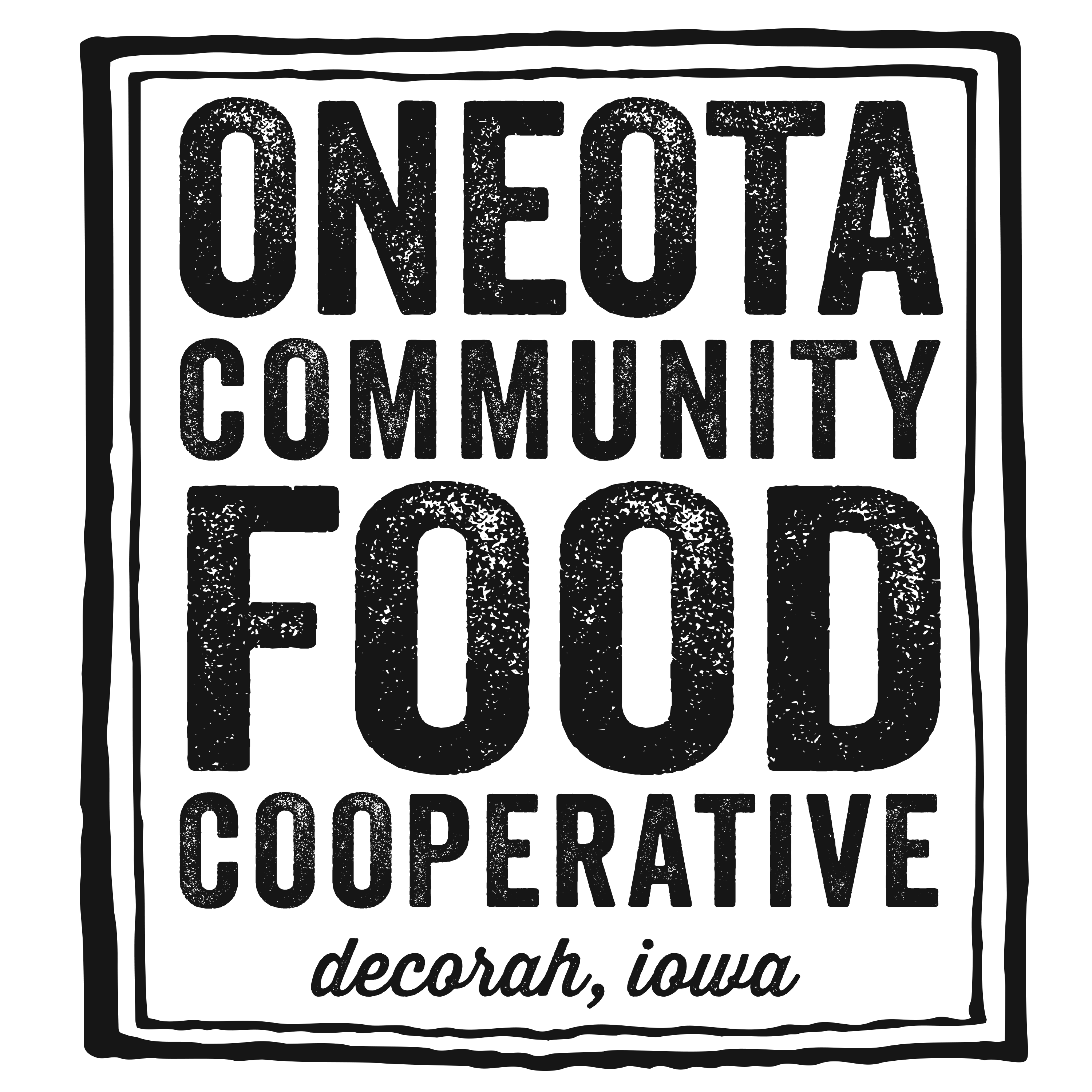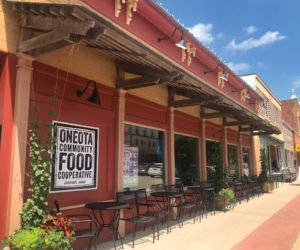By: Beth Rotto, Cheese and Chill Buyer
Recently I was aboard a bus with cheese buyers from other co-ops in Minnesota and Iowa as guests of the Wisconsin Milk Marketing Board and Classic Provisions, one of our cheese distributors from Plymouth, Minnesota. Twenty-two of us traveled to creameries and farms in southern and central Wisconsin, including Nordic Creamery, Widmer’s Cheese Cellars and LaClare Farms, as well as four other award-winning cheese producers and a successful dairy farm. I traveled over 1,200 miles in 4 days. During that time I was able to confer with other cheese buyers, comparing notes and swapping ideas, as well as having time to think about milk, cheese, farming, and my job at Oneota Co-op. It was an epic trip with lots of cheese sampling.
More than ever before, this tour made it absolutely clear to me that the quality of milk makes all the difference in the resulting cheese, and the quality of milk depends on the care of the animals, the land, and the handling of the milk. Milk’s flavor depends on what the animals eat and what they eat depends on the soil, the plants, the climate, and the time of year. Milk on the farm will taste different than milk hauled in cans to a neighboring creamery, or than milk transported in a tanker to a distant plant. Milk from animals grazing on the hills of Winneshiek County will taste different than milk from animals that forage on high mountain pastures; will taste different than those on a feedlot, and so on. What type of milk do we want our cheese made from? Quality milk needs to be fresh and not tainted by its atmosphere, by unhealthy bacteria, by chemicals, or by hormones. Cheese making condenses and intensifies all these things.
There is an upsurge of farmstead cheese producers (that is cheese made on the farm) – like Nordic Creamery, located outside of Westby, Wisconsin. Started especially for butter production, the Bekkum family has branched into cheesemaking in their small creamery. The work is arduous and unending, the hours long and demanding, and all members of the family need to contribute. This cheese is a labor of love and I am happy to offer handmade products from family businesses like theirs.
There are regional cheese producers who are descended from cheese makers in Switzerland, as is the case at Widmer’s Cheese Cellars in Theresa, Wisconsin. “Cellars” describe the production and aging rooms dug into the earth and supported by log beams. These spaces, “grandfathered in”, give the distinct feeling of stepping back in time. Here chees-makers use time-honored recipes handed down along with traditional methods and equipment, like the bricks used to press liquid from the cheese to make the original “Brick.” This cheese carries on a tradition of excellence and of ethnic heritage and I’m happy to offer cheese from companies like theirs.
There are energetic, savvy, young cheese-makers like Katie Hedrich at LaClare Farms outside Chilton, Wisconsin who are optimistically jumping into the business. Still in her 20s and off to a great start in a field dominated by men, Katie makes cheese with milk from the family’s goat dairy. Their facility, just one year old, is state-of-the-art with a restaurant, gift store, and glass viewing windows to the spic-n-span milking parlor and the cheese-making areas. Katie is an innovator and she uses her creativity to make award- winning American originals. This company shows that the future of artisan cheese-making is bright and I’m happy to offer cheese from companies like this.
Americans eat phenomenal amounts of cheese and much of that is produced by large companies with milk produced on large-scale farms. It’s a fact that the dairy business is a difficult business to be profitable in and many small farms have been squeezed out. We visited a farm that is considered mid-size, although they milk 300 cows, 3 times a day, day and night. Productivity is a big concern for these farmers who are at the cutting edge of genomics, a discipline of genetics using DNA sequencing to determine the potential of their animals. By sending a hair from a newborn calf to be tested, the farmers can find out how much each animal will produce compared to its peers. Animals with high scores can be sold to buyers around the world for phenomenal amounts of money. It is simply mind-boggling. Although caring for their animals deeply, I am concerned that animals on farms like these will become stressed and burned out. The cows who are milked remain indoors, which means closer quarters for the animals and, I would expect, more injury and illness. I am still processing all that I’ve seen. It feels like the more I know, the more I know I don’t know.
In the coming weeks I plan to reevaluate some of the cheeses that we sell, and in some cases I will be looking for alternatives. Come take a look at the variety, abundance and opportunities available to you at Oneota Community Food Co-op, and give a new cheese a try. It’s a great time to be alive and experience cheese.



